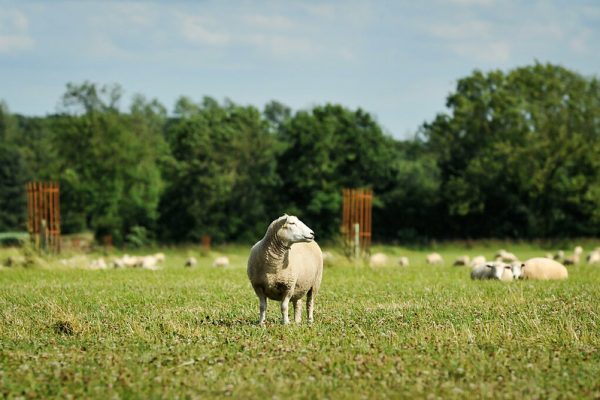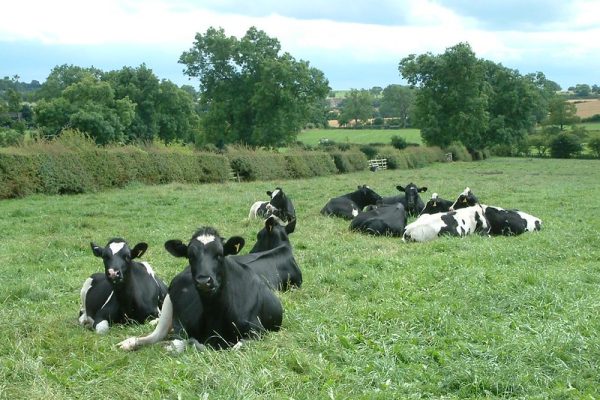Farmer led policy – leading the way on reducing antibiotic use on farm
Can dairy farmers lead the way in the UK for antibiotic reduction? Why of course, it is already happening! A pilot project sponsored by AHDB Dairy and the Langford Trust is looking into the feasibility of a participatory approach in reducing antimicrobial usage on UK dairy farms.
Farmers taking control…
Five Farmer Action Groups have been established across the South West of England as part of my PhD and I am following their progress as the groups work towards a practical set of actions to reduce their reliance on antimicrobials. The Farmer Action Groups are modelled on the Stable School methodology begun in Denmark over 10 years ago by Mette Vaarst. The Stable Schools were a great success and empowered Danish organic dairy farmers to create their own practical action plans to reduce antibiotic usage on farm. I am trying to re-create a similar situation here in the UK, giving farmers an opportunity to take ownership of a very farm-specific problem. The farmer action groups are facilitated by Sarah Bolt of AHDB Dairy who has been pivotal in not only the running of the groups, but also in the recruitment of farmers to the project.
Throughout my training as a vet, it has been drilled into me that veterinarians are animal health experts and by giving advice to farmers to improve the health of their herd and productivity of their business, real change can be made. This is certainly true in some respects but definitely not the whole picture. I quickly realised as a practicing vet that I wasn’t making quite the impact on farms as I had hoped. Why was my advice not being heeded? What could I do and say to make the farmer listen to me? It became apparent that farmers love to learn from other farmers. Why not? All too often, people in authority advise me to do this, do that, and I don’t. But when my close friend or peer tells me what they did in my situation, my ears suddenly prick up. This is what the Farmer Action Groups are trying to do; harness the experiences and expertise of dairy farmers so that they can improve their farms in a practical sustainable way, themselves.
How the Farmer Action Groups work…
The groups consist of 5-8 farms with 1-3 farmers from each farm attending each meeting. There is a high level of commitment and once signed up to the project, it is expected that everyone attends every meeting. Holidays are an accepted reason for absence! The group meets on each other’s farm every 6 weeks and everyone in the group will host.
The structure of the meetings is centred around a farm walk, where the host farmer showcases his/her farm with the spotlight being on disease treatments, prevention and antimicrobial use. Before each meeting I compile a medicine review for the host farm based on vet sale data. This is used as a bench mark of where each farmer is in regards to antibiotic use at the start of the project and also as a discussion point at the meeting.
Everyone gets an opportunity to talk about their farm and what has been happening between meetings. Interestingly, this is the time when participants voice any changes on farm in terms of antibiotic usage. Some examples are re-designing calf housing to reduce the risk of respiratory disease and hence antibiotic treatments, swapping from antibiotics that are critically important to human health to first-line products, using more anti-inflammatory products, and improving colostrum management.
The host summarises their system and I highlight the key points from the medicine review. The medicine review has been quite a focal point for the groups as 1) participants seem keen to know how much antibiotic and other medicines they use and 2) there is a lot of talk in the media etc. about the classes of antibiotic, critically important antibiotics, and ways to measure usage. I am finding farmers are keen to know this information and are struggling to get it. There is still much debate as to which metric is best for measuring antibiotic use and they all seem to have drawbacks. As the old saying goes, you can’t manage what you can’t measure!
The farm walk is led by the host farm with Sarah Bolt ensuring the meeting stays on time and topic. I visit the farm prior to them hosting and the plan of action for the day is decided in collaboration with the farmer. What do you want to showcase? What are your major concerns? These are some of the areas we cover at the pre-visit so we can co-create an agenda for the day and the host gets the most out of it.
After the walk, Sarah and I run a group discussion activity. These can vary; from sticky note exercises, to farmers drawing maps of the farm they have just been around, to using score charts. The aim of the discussion is to produce a practical action plan for the host farmer to ultimately reduce antibiotic use. The host will accept/disregard suggestions as they see fit.
This action plan will be the focus of the next round of meetings, when each participant will host everyone again and we will look at how well the action plan has been implemented, what works, what doesn’t, and can we quantify this?
The benefits of peer-to-peer learning
So far, the Farmer Action Groups have sparked a series of on-farm changes that the participants have thought up and implemented themselves. This is what is key. Examples include having more discussions with their vets about which antibiotics are used on farm and why, sparking long chats over respiratory disease and vaccinations. Some farmers have increased the frequency at which the foot trimer visits so as to pick up lameness early and prevent treating with antibiotics. Calf health has been a hot topic ensuring their cattle get the best start in life.
I am optimistic this form of peer-to-peer learning is a great way of empowering farmers resulting in practical on-farm change for the benefit of cattle and humans. The next step is informing policy on antibiotic usage on farm and how this research can help!
If you would like to find out more or get involved, please contact Lisa at lisa.morgans@bristol.ac.uk.
Learn more:
Interested in exploring some of the topics Lisa mentions? Have a look at:
- Aled Rhys Davies’ Nuffield report ‘Alternatives to antibiotics in agriculture’
- Lindsay Whistance’s blog ‘Antibiotics: can we keep farm animals well without them?’
- Information on an Innovative Farmers field lab ‘Improving the targeting of mastitis treatments’
- Sally Wood’s blog ‘Homeopathy; a credible alternative to antibiotics’
- AHDB Dairy’s ‘Healthy Feet Programme’
- The British Veterinary Association podcast ‘Cattle lameness and digital dermatitis‘
- Stephen Roderick’s blog setting the knowledge hub ‘FarmHealthOnline.com’ in context.
(Editor’s Note)
Header image: Farmer Action Group in process on participant farm. Photo credit: Lisa Morgans





